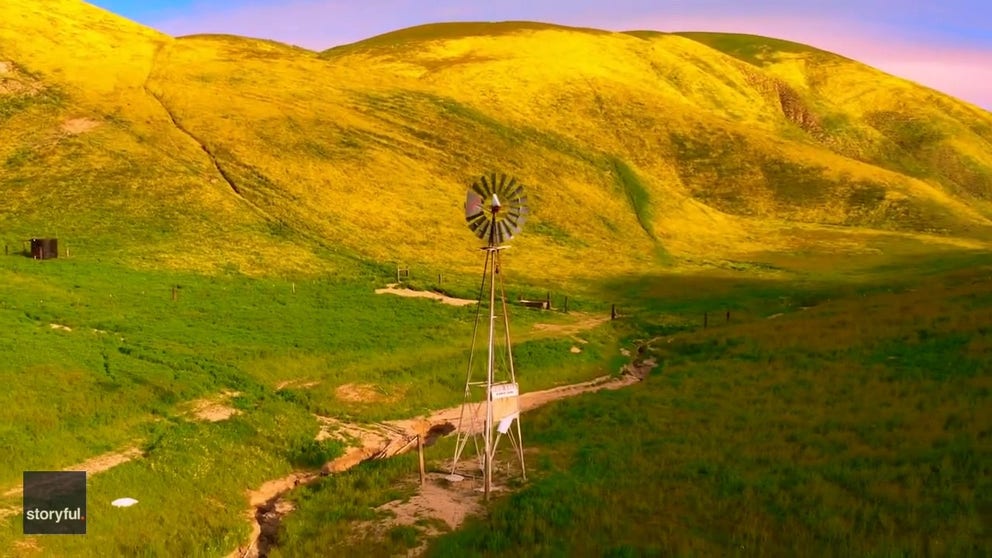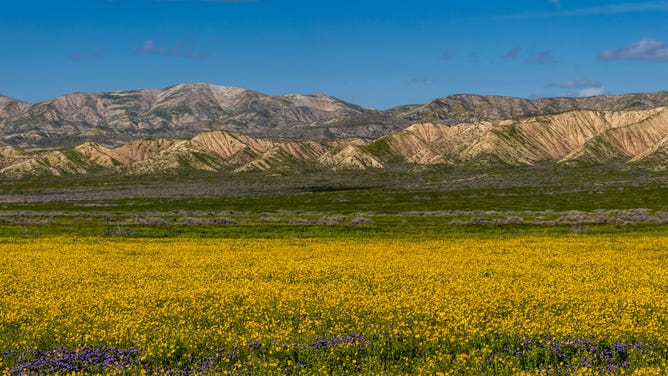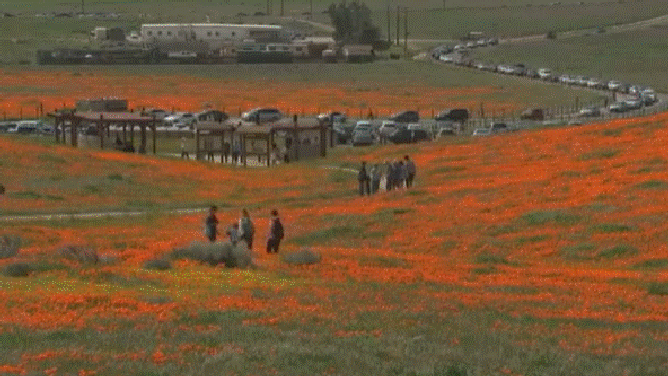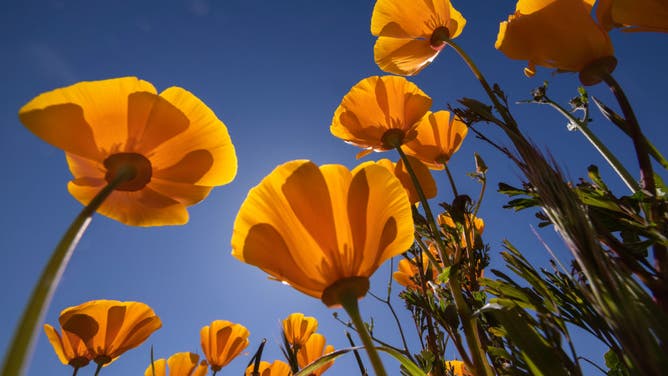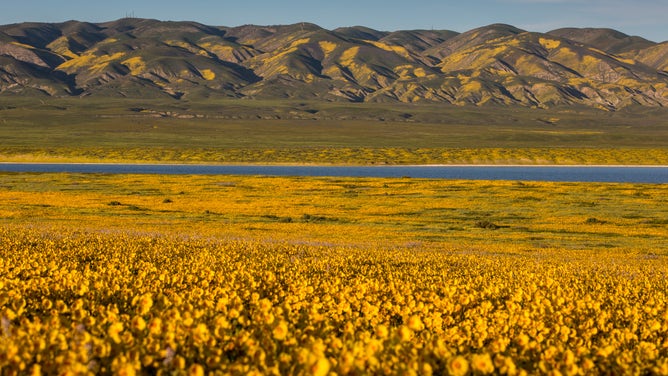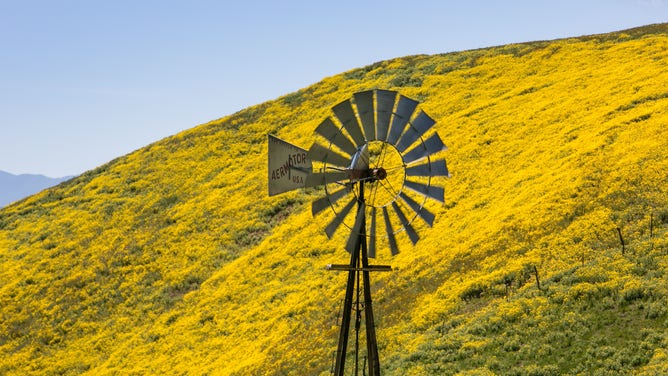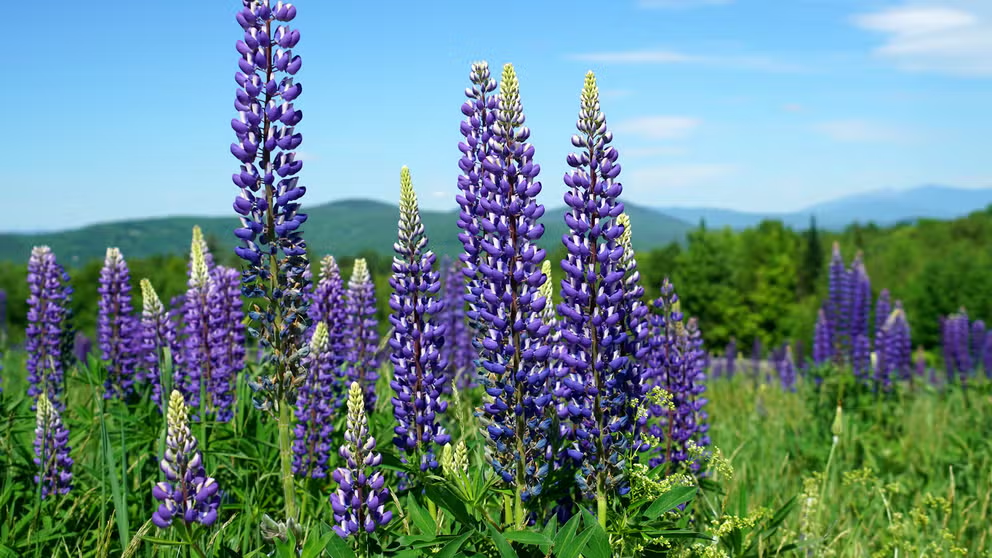What is a superbloom?
A combination of weather ingredients create optimal conditions that trigger long-dormant seeds of desert flowers to awaken.
California superbloom: Winter rains bring spring explosion of colorful flowers
FOX Weather's Max Gorden reports on the wildflower superblooms covering deserts and hillsides across California, some of which are so vibrant they can be seen from space.
California deserts are bursting with color this year as wildflower blooms cover the landscape.
Known as superblooms, these floral phenomena usually occur in the late winter and early spring, resulting from a unique combination of sun, rain, temperature and wind, according to the California Department of Parks and Recreation.
These weather ingredients create optimal conditions that trigger long-dormant seeds to awaken.
California superbloom covers desert landscapes
Aerial footage shows hillsides covered in carpets of yellow flowers during a rare superbloom event. (Courtesy: Shreenivasan Manievannan via Storyful)
"It's this adaptation that's built into the plants," said Mike McElhatton, director for the Ana-Borrego Desert Natural History Association.
According to McElhatton, desert flowers drop seeds during lush and wet years. Those seeds are then able to survive in the ground for long periods of time without any water.
When water does arrive, it must be widespread throughout the desert to cue the seeds to grow – but when they do, the result can be spectacular.
CALIFORNIA'S SUPERBLOOM VISIBLE FROM SPACE IN NEW NASA IMAGERY
"These areas that are normally just rock, just soil, just barren, not even shrubs, they’re filled with life," said Alan Van Valkenburg, a park ranger at Death Valley National Park. "So, Death Valley really does go from being a valley of death to a valley of life."
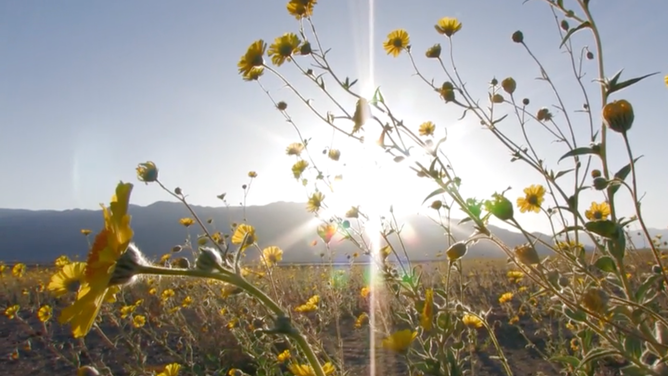
Superbloom in Death Valley National Park in 2016.
(Death Valley NPS / FOX Weather)
In addition to Death Valley, another prime viewing superbloom site is the Anza-Borrego Desert.
Located near the U.S.-Mexico border, the Anza-Borrego Desert had a grand superbloom in the spring of 2017 after atmospheric river storms drenched the state over that winter.
The superbloom seen this year is also the result of atmospheric rivers, which dropped trillions of gallons of water onto the Golden State.
7 of the best places to see flower superblooms in the U.S.
With the arrival of spring, fields across the United States come alive with color in stunning floral displays.

